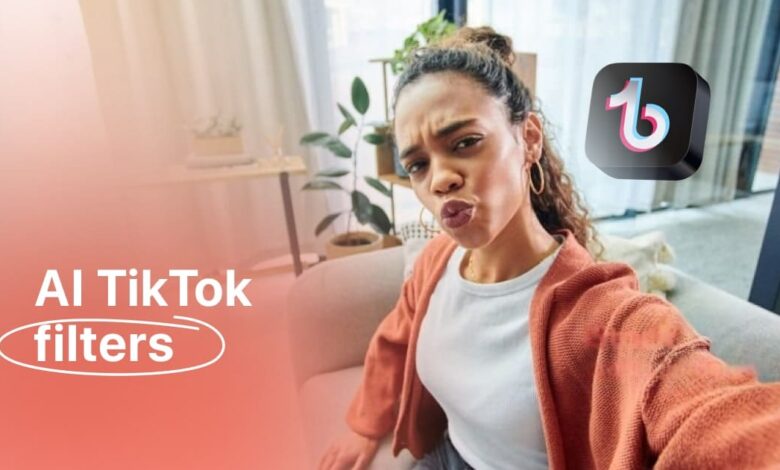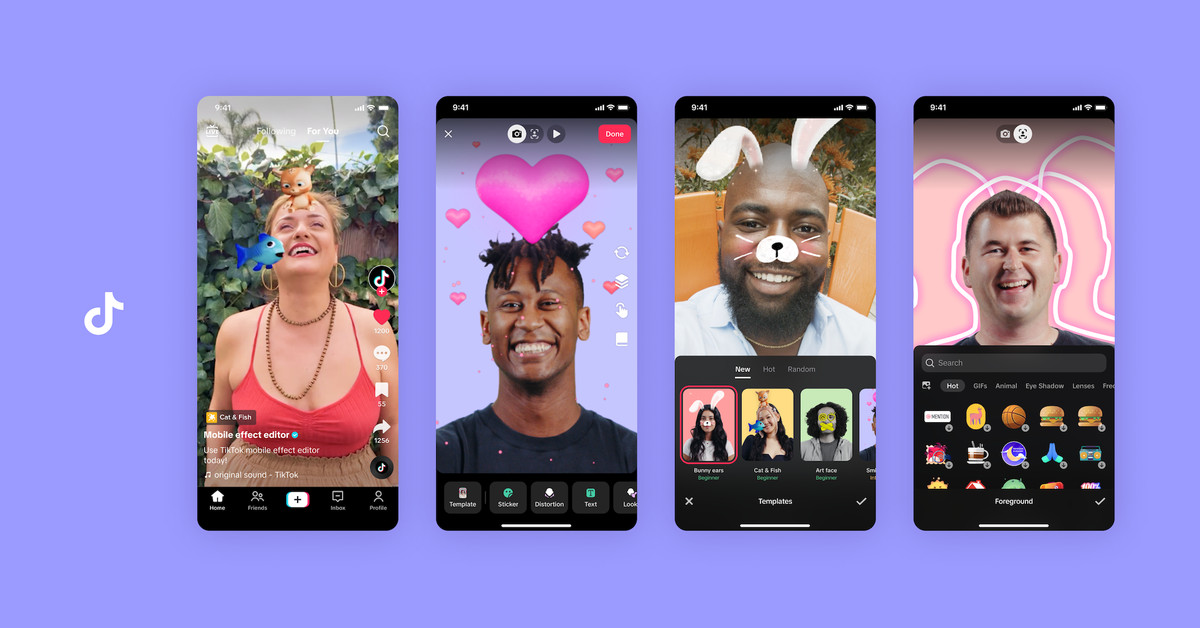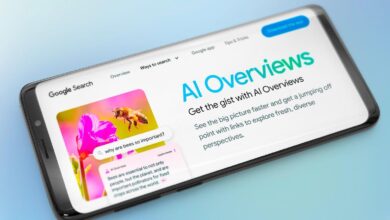TikTok’s AI Filter Trend Captivates Global Users

The digital landscape is perpetually evolving, with social media platforms serving as the primary crucible for innovation. In this dynamic arena, TikTok has consistently proven itself a master of virality, not just through user-generated content but through the strategic deployment of its own in-app features. The latest phenomenon to capture the global imagination is not a dance challenge or a meme, but a sophisticated artificial intelligence filter named “AI Greenscreen.” This tool has transcended its function as a mere effect, evolving into a cultural moment that reveals profound insights about identity, technology, and the future of digital interaction. This article provides a deep dive into the trend, exploring its mechanics, its explosive popularity, the implications for content creation, and the critical considerations it raises for the future.
A. Deconstructing the Hype: What Exactly Is The AI Greenscreen Filter?
At first glance, the filter appears deceptively simple. A user activates it, and their smartphone camera seamlessly generates an AI-powered description of them or their surroundings, displayed as stylized text on a green screen background. However, the magic lies in its complex operation.
Unlike basic filters that apply pre-set overlays or distortions, this tool leverages a powerful large language model (LLM) – a type of AI trained on a colossal dataset of text and images. When you point your camera at a person, object, or scene, the AI doesn’t just recognize elements; it interprets them. It performs a rapid, real-time analysis of visual data, processes it through its neural networks, and generates a creative, often surprisingly nuanced, textual description.
For example, pointing the camera at yourself might yield results like: “A man in his late 20s with curly brown hair and a blue shirt, looking slightly amused while sitting in a modern living room” or “A person with a thoughtful expression, embodying a creative and artistic vibe in a cozy café.” The descriptions can range from straightforward and factual to whimsical and interpretive, adding an element of surprise that is key to its addictiveness.
B. The Engine of Virality: Why This Filter Took Over Everyone’s For You Page
Virality is never an accident. It is the perfect storm of relatable content, shareability, and psychological engagement. The AI Greenscreen filter masterfully ticked all these boxes.
A. The Mirror of Machine Perception: Humans have an innate curiosity about how they are perceived. This filter offers a unique, seemingly objective lens that of an artificial intelligence. It satisfies a deep-seated desire to see ourselves through an external, non-human perspective, creating a fascinating game of self-reflection versus AI interpretation.
B. The Element of Surprise and Humor: The AI is not always accurate, and its “mistakes” are a primary source of content. A user might be described as “a legendary wizard from a fantasy realm” or a messy bedroom might be dubbed “a minimalist artist’s studio in a state of creative flux.” These humorous and unexpected interpretations generate laughter and shareable, relatable moments.
C. High Relatability and Low Barrier to Entry: Unlike complex dance trends that require practice, this trend is universally accessible. Anyone, anywhere, can point their camera and participate. This inclusivity massively broadened its appeal, drawing in users of all ages and from all niches, from gamers and pet owners to fashionistas and chefs.
D. A Springboard for Creativity: The filter didn’t just create a single type of video. It became a versatile tool. Users began using it to:
-
Narrate their day: Providing a comedic, AI-generated voiceover for mundane activities.
-
Introduce themselves: Using the AI description as a quirky bio on their profile.
-
Create skits: Filming friends and family and reacting to the AI’s often-roasting descriptions.
-
Showcase pets: The descriptions of cats, dogs, and other animals became an instant sub-trend, with the AI attributing human-like jobs and personalities to them.
C. Beyond the Trend: Strategic Implications for Content Creators and SEO
For digital creators and marketers, the virality of this filter is not just entertainment; it’s a masterclass in modern engagement. Understanding its success can inform future content and SEO strategies.
A. Leveraging Novelty for Algorithmic Advantage: TikTok’s algorithm, and by extension Google’s, favors novelty and high engagement. Early adoption of new, platform-native features signals to the algorithm that your content is fresh and relevant. This can lead to significantly amplified reach. Creators who used the filter in its first week saw massive view counts, and savvy websites are now creating articles and listicles about the best AI filter videos, capitalizing on the high-volume search traffic.
B. Keyword Goldmine and Content Ideas: The trend has spawned a whole new set of high-traffic keywords. Terms like “AI Greenscreen filter,” “TikTok AI filter,” “how to use AI description,” and “funny AI filter videos” are trending. Content creators can leverage this by:
-
Creating tutorial videos on how to find and use the filter.
-
Compiling reaction videos and “best of” compilations.
-
Writing blog posts that analyze the trend’s popularity, exactly like this one.
-
Using these keywords in video captions, hashtags, and website metadata to attract organic search traffic.
C. Humanizing Technology for Broader Appeal: The filter’s success demonstrates that advanced AI doesn’t have to be intimidating. By packaging it in a fun, accessible, and humorous format, TikTok has democratized a powerful technology. This is a crucial lesson for brands: making complex tech relatable and user-friendly is the key to mass adoption.
D. The Flip Side of the Filter: Critical Considerations and Ethical Concerns
As with any powerful technology, the AI Greenscreen trend is not without its potential pitfalls. Its popularity forces a necessary conversation about privacy, bias, and mental health.
A. Data Privacy and Usage: To function, the AI must process vast amounts of visual data in real-time. This raises critical questions. Where is this data being processed? Is it stored on TikTok’s servers? Could these visual snippets be used to further train their AI models? While TikTok’s privacy policy outlines data usage, the sheer intimacy of an AI describing your personal space makes these questions more pressing than ever.
B. Inherent Algorithmic Bias: AI models are only as unbiased as the data they are trained on. There have been numerous reports of the filter displaying bias based on race, gender, and body type. It might misgender individuals, reinforce stereotypes, or make insensitive descriptions. This highlights a well-documented problem in AI development and serves as a public reminder that these systems can perpetuate societal biases if not carefully audited and corrected.
C. Impact on Self-Image and Perception: While often funny, being constantly analyzed by an AI can have unintended psychological effects. An inaccurate or unflattering description could potentially impact a user’s self-esteem, especially younger audiences. It introduces a new dimension to digital self-consciousness wondering not just how you look to humans, but how you are “read” by machines.
E. The Future is Now: What This Filter Tells Us About What’s Next
The AI Greenscreen filter is far more than a passing fad; it is a significant milestone in the integration of AI into our daily digital lives. It points toward several key developments on the horizon.
A. The Proliferation of Generative AI in Social Apps: This trend is a clear signal from TikTok that generative AI will be deeply embedded into the core experience of the app. We can expect a flood of new filters and tools that allow users to not just modify their reality but to generate entirely new content text, images, and eventually video directly within the platform.
B. The Evolution of Search and Discovery: Imagine pointing your phone at a landmark and getting a poetic description of its history, or at a meal and receiving a recipe generated just for you. This filter is a primitive step towards a future where AI-powered visual search replaces text-based queries. The way we discover information and interact with our environment is poised for a radical shift.
C. Hyper-Personalized Content and Advertising: The technology behind this filter can be adapted for advertising. A brand could create an ad that uses AI to analyze a user’s immediate environment and tailor the ad message in real-time. While powerful for marketers, this also escalates privacy concerns to an entirely new level, necessitating transparent opt-in policies and robust data protection frameworks.
Conclusion: A Mirror Held Up by Machine
TikTok’s AI Greenscreen filter took the world by storm not because it was the most technologically advanced tool, but because it was the most human. It tapped into our curiosity, our sense of humor, and our fundamental desire to connect and share experiences. It is a perfect case study in how to make cutting-edge technology feel personal, playful, and profoundly shareable.
However, it also acts as a crucial mirror, reflecting the urgent ethical questions we must confront as AI becomes woven into the fabric of our social interactions. Its journey from a simple in-app feature to a global sensation underscores a fundamental truth: the future of digital content lies in the seamless, creative, and responsible fusion of human creativity and artificial intelligence. For content creators, marketers, and everyday users, understanding this fusion is no longer optional it is essential for navigating the next chapter of the internet.






